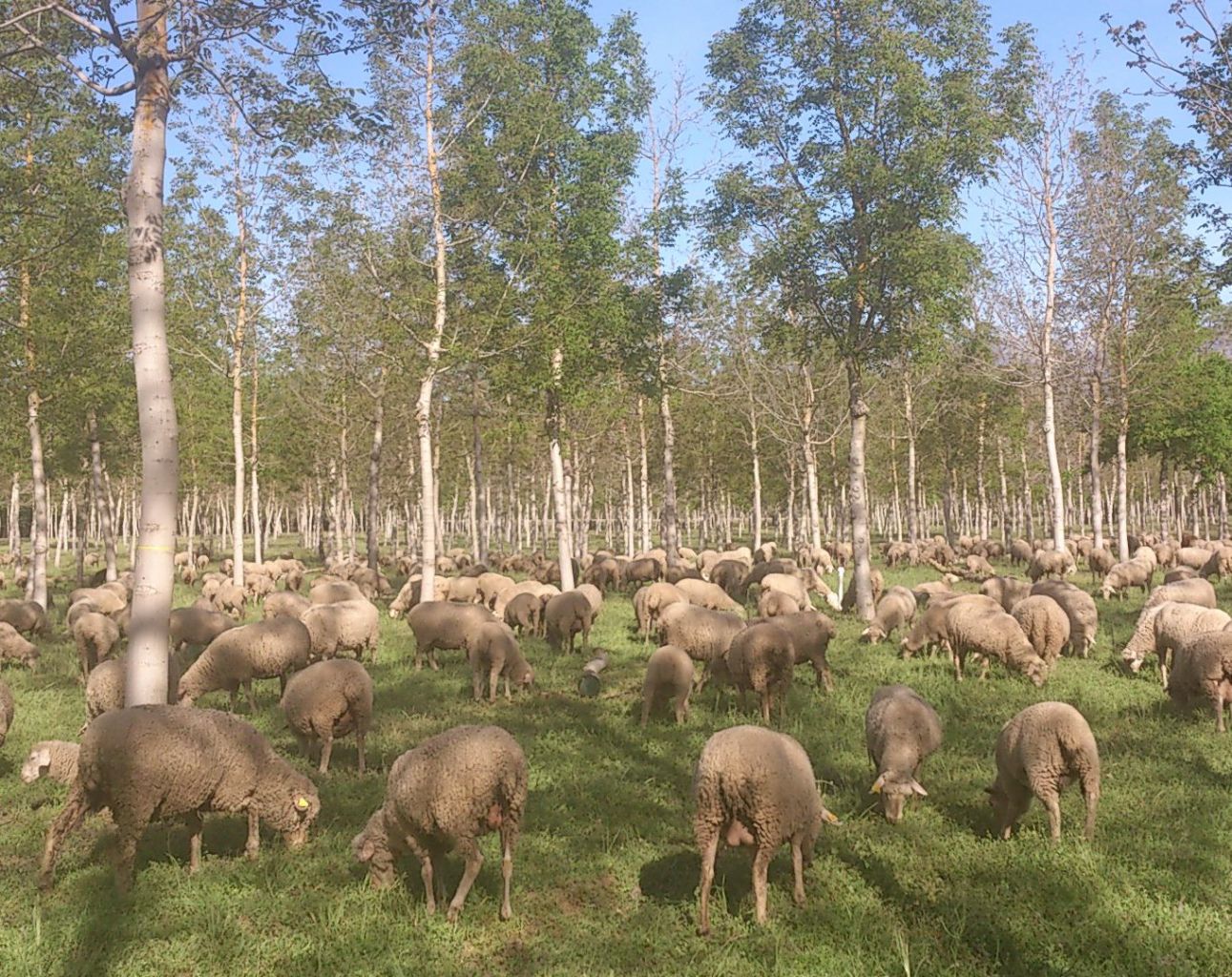
Grazing and intercropping of plantation trees in Spain
Description of system
Olive, almond and carob orchards in Spain were traditionally either grazed or intercropped. However, these traditional agroforestry systems have become marginal and new agroforestry practices, based on plantations of quality timber trees such as cherry and walnuts on agricultural land are developing. These are often managed with high levels of inputs. The adoption of grazing and intercropping in such systems has the potential to create economic and environmental benefits. However, there generally is a lack of knowledge and information on appropriate agroforestry management practices and the benefits, what is constraining the adoption of agroforestry schemes to manage these new afforested farmlands.
Initial stakeholder meeting
The initial stakeholder meeting was held on 30 May 2014. The stakeholders perceived positive environmental, animal health and welfare benefits, and tree survival from grazing and intercropping plantations. By contrast, respondents had negative perceptions regarding management, economics, and the administrative burden. Potential research themes included the bio-economic consequence of grazing high quality timber plantations; the use of legumes; pollarding practice; selection of shade-adapted cereal, legume, and grass species and cultivars; and the response of cereal crops to neighbouring trees. This webpage describes the results focused on grazing and intercropping with legumes. The results focused on cereal varieties are reported in work-package 4.
If you would like to know about the activity of this group, please contact Gerardo Moreno gmoreno@unex.es, University of Extermadura, Spain.
Download the initial stakeholder report
Download the initial research and development protocol
This stakeholder group has developed two research and development protocols. The first is focused on the use of grazing and legumes in walnut plantations; the second is focused on the pollarding of wild cherry.
Download the system description
A research update on the use of grazing and legumes in walnut plantations was produced in September 2015.
Lesson learnt
María Lourdes López-Díaz and colleagues at the University of Extremadura have summarised the lessons learnt regarding the grazing of high value walnut and wild cherry timber plantations in Spain. The overall results suggest that grazing in walnut and wild cherry plantations can reduce maintenance costs and environmental risks, without major effects on tree growth.
The first experiment compared the effect of cultivation, grazing, and mowing beneath walnut trees. The lessons learnt include:
- Grazing increased the density of pasture roots to a soil depth of 50 cm, compared to cultivation and mowing. There was some evidence that this increased the recovery of nutrients at depth and reduced the leaching of nitrate.
- Grazing did not favour the tree growth as much as cultivation but it gave better results than mowing.
The second experiment compared natural vegetation, natural vegetation with about 40 kg/ha of nitrogen, phosphate and potash, and the sowing of legumes (with phosphate and potash) beneath walnut trees. The lessons learnt include:
- The unmanaged annual pasture yield was around 3.5 t/ha which could support 0.6 livestock units per hectare.
- The sowing of legume forage increased the level of soil nitrogen and potassium but reduced the available phosphorus.
- Sowing rich-legume pasture in the alleys could roughly double the stocking rate without compromising the tree growth, and it improved carbon sequestration.
The last part of the report focuses on the thinning and pollarding of wild cherry trees. The lessons learnt include:
- Thinning had a slight but positive effects on the growth of individual trees for a period of three years.
- Pollarding had neither positive nor negative effects on tree diameter increment, but the level of cavitation was reduced.